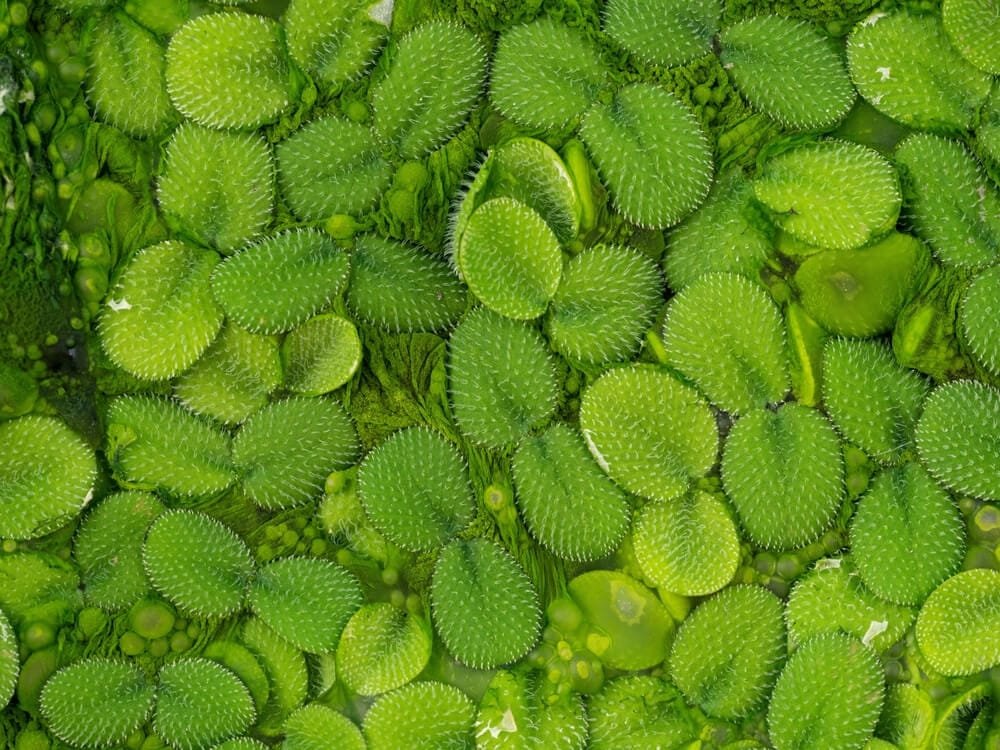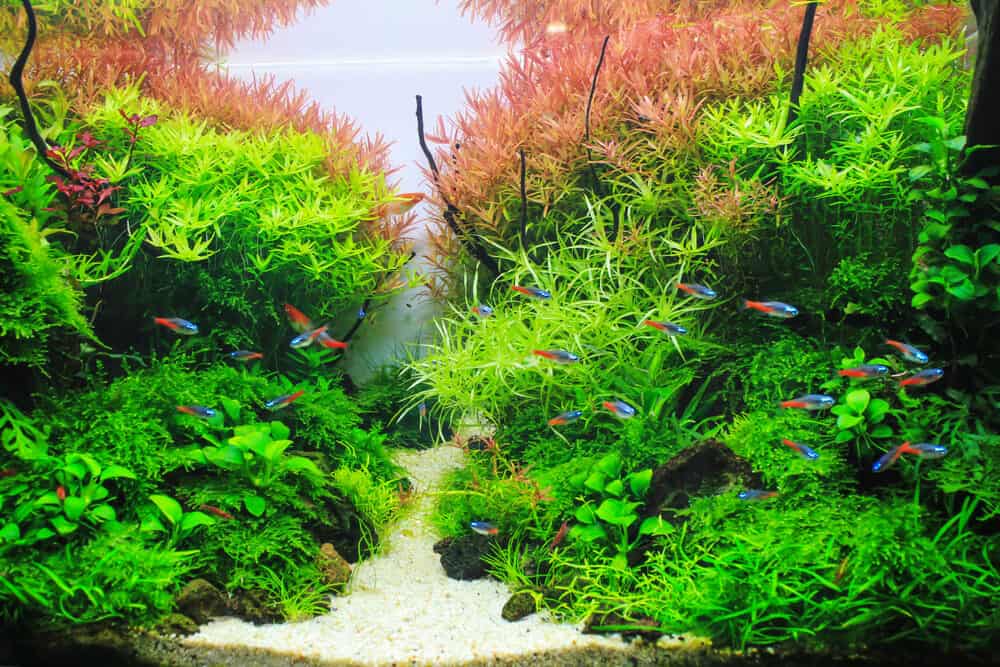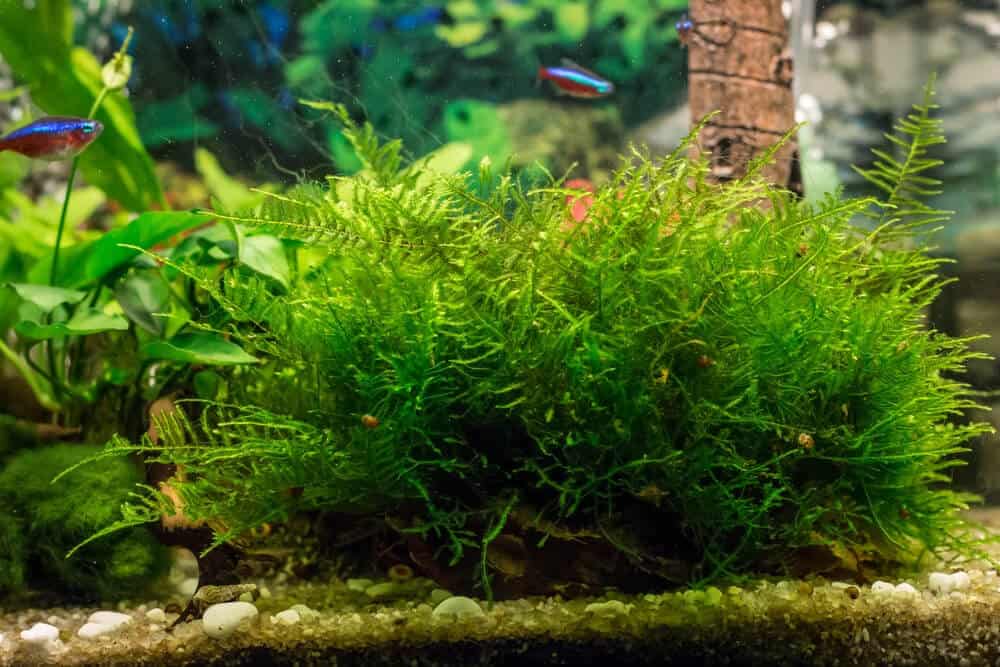If you’re new to the world of aquariums and are looking for an aquatic plant that is easy to care for, then look no further than Salvinia Cucullata. This Beginner’s Guide to Salvinia Cucullata Aquarium Care will provide you with all the essential information you need to know to keep this charming floating plant thriving in your tank.
From its unique characteristics and benefits to its care requirements, you’ll discover everything you need to create a beautiful and healthy aquatic environment for you and your fish. So, let’s dive in and explore the wonderful world of Salvinia Cucullata!
Overview of Salvinia Cucullata
Salvinia Cucullata, commonly known as the Asian watermoss or hooded water fern, is a floating plant that is popular among aquarium enthusiasts. It is native to Asia and is often found in ponds, lakes, and slow-moving rivers. This aquatic plant is known for its unique and attractive appearance, making it a great addition to any aquarium. Not only does it provide aesthetic appeal, but it also offers several benefits for both the plants and fish in the tank.
Characteristics of Salvinia Cucullata
Salvinia Cucullata has distinct characteristics that set it apart from other aquatic plants. Its leaves are small, oval-shaped, and have a vibrant green color. Each leaf is covered with tiny hairs that help repel water, allowing the plant to float effortlessly on the surface. These hairs also create a velvety texture, adding to its visual appeal. The plant forms dense mats on the water’s surface, providing shade and cover for other plants and fish in the aquarium. It is a fast grower and can quickly cover a large surface area if not properly maintained.
Natural Habitat
In its natural habitat, Salvinia Cucullata can be found in warm and tropical regions of Asia, including India, Thailand, and Indonesia. It thrives in slow-moving or stagnant waters, where it can float freely on the surface. The plant prefers areas with moderate to high light intensity and temperatures between 70 to 86 degrees Fahrenheit. Salvinia Cucullata is well-adapted to nutrient-rich environments and can withstand a wide range of water conditions.
Benefits of Keeping Salvinia Cucullata in an Aquarium
Keeping Salvinia Cucullata in an aquarium offers several benefits. Firstly, its floating mats provide shade and cover for fish, creating a natural and secure environment for them. Additionally, the plant absorbs excess nutrients from the water, helping to prevent the growth of algae and maintain water quality. Salvinia Cucullata also contributes to oxygenation by releasing oxygen bubbles during photosynthesis. This can greatly benefit the overall health of the aquarium and its inhabitants.
Setting Up an Aquarium for Salvinia Cucullata
To successfully keep Salvinia Cucullata in an aquarium, it is important to set up the tank correctly. Here are some key considerations:
Choosing the Right Tank Size
Salvinia Cucullata can thrive in different tank sizes, but a larger tank is recommended to allow for proper growth and prevent overcrowding. A minimum tank size of 10 gallons is suitable for beginners, but larger tanks provide more stability and allow for a greater variety of tankmates.
Lighting Requirements
This plant requires moderate to high light intensity. Utilizing a full-spectrum aquarium light or LED light with a color temperature of around 6500K will provide the necessary light for optimum growth. It is important to ensure that the light reaches the water’s surface to promote healthy growth.
Water Parameters
Salvinia Cucullata prefers slightly acidic to neutral water with a pH range of 6.5 to 7.5. The temperature should be maintained between 70 and 86 degrees Fahrenheit. Regular water testing and adjustments may be necessary to maintain stable water conditions for the plant.
Substrate Selection
Since Salvinia Cucullata is a floating plant, substrate selection is not crucial. However, a layer of fine-grained gravel or sand at the bottom of the aquarium can provide a natural appearance and create a suitable habitat for bottom-dwelling fish.
Filtration System
A filtration system is essential for maintaining water quality in the aquarium. A hang-on-back (HOB) filter or a canister filter can effectively remove debris and provide water flow, ensuring proper oxygenation. It is important to avoid strong currents that could dislodge or damage the floating plant.
Acclimating Salvinia Cucullata to the Aquarium
Acclimating Salvinia Cucullata to the aquarium properly is crucial for its successful integration. Follow these steps to ensure a smooth transition:
Purchasing Healthy Specimens
When purchasing Salvinia Cucullata, select healthy specimens free from yellowing or decaying leaves. It is best to buy from reputable sources, such as aquatic plant nurseries or trusted aquarium stores.
Floatation Method
To acclimate the plants, gently release them onto the water’s surface and allow them to float. This method allows the plants to adjust to the temperature and water conditions of the aquarium gradually. Floatation should be done for approximately 15 to 20 minutes.
Introducing Them to the Tank
After the floatation period, gently release the plants into the aquarium, ensuring they are placed near the water’s surface. This will allow them to receive sufficient light for photosynthesis. Avoid overcrowding the tank, as this may hinder growth and water flow.
Optimal Care for Salvinia Cucullata
Proper care is essential to ensure the health and vitality of Salvinia Cucullata. Here are some key care considerations:
Maintaining the Water Temperature
Salvinia Cucullata thrives in temperatures between 70 and 86 degrees Fahrenheit. Use a reliable aquarium thermometer to monitor and adjust the water temperature as needed. Sudden temperature fluctuations should be avoided, as they can stress the plant.
Proper Lighting Schedule
Salvinia Cucullata requires moderate to high light intensity to thrive. Provide a lighting schedule of 10 to 12 hours per day to simulate natural daylight. Utilize a timer to ensure consistent lighting and avoid excessive exposure.
Water Quality Management
Regular water testing is crucial to maintain optimal water quality. Monitor parameters such as pH, ammonia, nitrite, and nitrate levels. Perform regular water changes to remove accumulated nutrients and prevent the buildup of harmful substances.
Fertilizer and Nutrient Requirements
Salvinia Cucullata benefits from additional nutrients to support its growth. Liquid fertilizers specifically formulated for aquarium plants can be added according to the manufacturer’s instructions. It is important to avoid overdosing, as excessive nutrients can lead to algae overgrowth.
Pruning and Propagation Techniques for Salvinia Cucullata
To ensure the healthy growth and appearance of Salvinia Cucullata, regular pruning and propagation may be necessary. Here are some techniques to consider:
Trimming and Controlling Growth
Salvinia Cucullata is a fast-growing plant that can quickly cover the water’s surface if left untrimmed. Regularly trim the plant to control its growth and prevent shading of other plants. Trimmed plant material can be removed or used for propagation.
Removing Dead or Yellowing Leaves
Inspect the plant regularly for dead or yellowing leaves. These should be carefully removed to maintain the overall health and appearance of the plant. Removing these leaves will also prevent the accumulation of debris in the aquarium.
Encouraging Reproduction and Propagation
Salvinia Cucullata reproduces through vegetative propagation. It forms small buds that detach and develop into new plants. To encourage propagation, gently separate these buds from the parent plant and place them in an area with sufficient light and water flow. They will eventually grow into independent plants.
Dealing with Common Issues in Salvinia Cucullata Care
While Salvinia Cucullata is generally hardy, it can still face some common issues. Here are a few problems and potential solutions:
Algae Overgrowth
Excessive algae growth can occur if there is an imbalance of nutrients or inadequate lighting. Regular water testing and maintenance, along with proper lighting, can help prevent algae overgrowth. Additionally, introducing algae-eating fish or shrimp can provide natural control.
Pest Infestation
Pest infestations, such as snails or freshwater shrimp, can occur in the aquarium. Regularly inspect the plants and remove any pests manually. Alternatively, introduce natural predators, such as assassin snails or dwarf crayfish, to control the pest population.
Nutrient Imbalance
An imbalance of nutrients can lead to nutrient deficiencies or toxicities in Salvinia Cucullata. Regularly monitor nutrient levels and adjust fertilizer dosages accordingly. It may be helpful to consult with experienced aquarists or plant experts for specific guidance.
Oxygenation Problems
Insufficient oxygenation can occur if there is poor water flow or excessive organic waste buildup. Ensure proper water circulation by utilizing a suitable filtration system. Regular maintenance, such as water changes and cleaning the filter, can help prevent oxygenation problems.
Compatibility and Tankmates for Salvinia Cucullata
When selecting tankmates for Salvinia Cucullata, it is important to consider their compatibility. Here are some factors to keep in mind:
Choosing Suitable Tankmates
Salvinia Cucullata can coexist with a wide variety of peaceful fish and invertebrates. Small shoaling fish, such as tetras or rasboras, often appreciate the shade and cover provided by the floating mats. Peaceful community fish, such as guppies or mollies, can also be suitable tankmates.
Avoiding Aggressive or Herbivorous Species
It is important to avoid aggressive or herbivorous species that may damage or consume the Salvinia Cucullata. Avoid fish such as cichlids or large, herbivorous species like plecos that may nibble on the plant.
Possible Uses of Salvinia Cucullata in the Aquarium
Salvinia Cucullata serves several purposes in the aquarium beyond its aesthetic appeal. Consider the following uses:
Providing Shade and Cover for Other Plants and Fish
The floating mats of Salvinia Cucullata provide shade and cover for other plants and fish in the aquarium. This can help reduce stress in fish and provide a natural habitat for them to hide and explore.
Enhancing Aesthetic Appeal
Salvinia Cucullata adds a unique and visually appealing element to the aquarium. The velvety texture of the leaves and the way they float on the water’s surface create an eye-catching display.
Water Filtration and Oxygenation
Salvinia Cucullata plays a role in water filtration by absorbing excess nutrients, helping to prevent algae overgrowth. Additionally, the plant releases oxygen during photosynthesis, contributing to the overall oxygenation of the aquarium.
Cautions and Limitations of Salvinia Cucullata Care
While Salvinia Cucullata is a popular choice for aquarium enthusiasts, there are some cautions and limitations to consider:
Legal Restrictions in Some Regions
Salvinia Cucullata may be restricted or banned in certain regions due to its invasive potential. Before obtaining or introducing this plant to your aquarium, research and comply with local regulations to avoid any legal issues.
Potential Overgrowth and Invasive Behavior
Salvinia Cucullata is known for its fast growth, which can lead to overgrowth if not properly maintained. Regular trimming and control are necessary to prevent the plant from dominating the aquarium and shading other plants.
Effects on Native Aquatic Plants
If introduced to natural bodies of water, Salvinia Cucullata has the potential to become invasive and outcompete native aquatic plants. It is important to prevent the release of this plant into local waterways to avoid negative ecological consequences.
Conclusion
Salvinia Cucullata care can be rewarding and enjoyable, particularly for beginners in the aquarium hobby. Its unique characteristics, benefits, and relative ease of care make it an ideal choice for adding visual interest and enhancing the overall health of an aquarium. By following the guidelines outlined in this article, you can create a thriving aquatic ecosystem that showcases the beauty and benefits of Salvinia Cucullata. Happy aquatic gardening!







